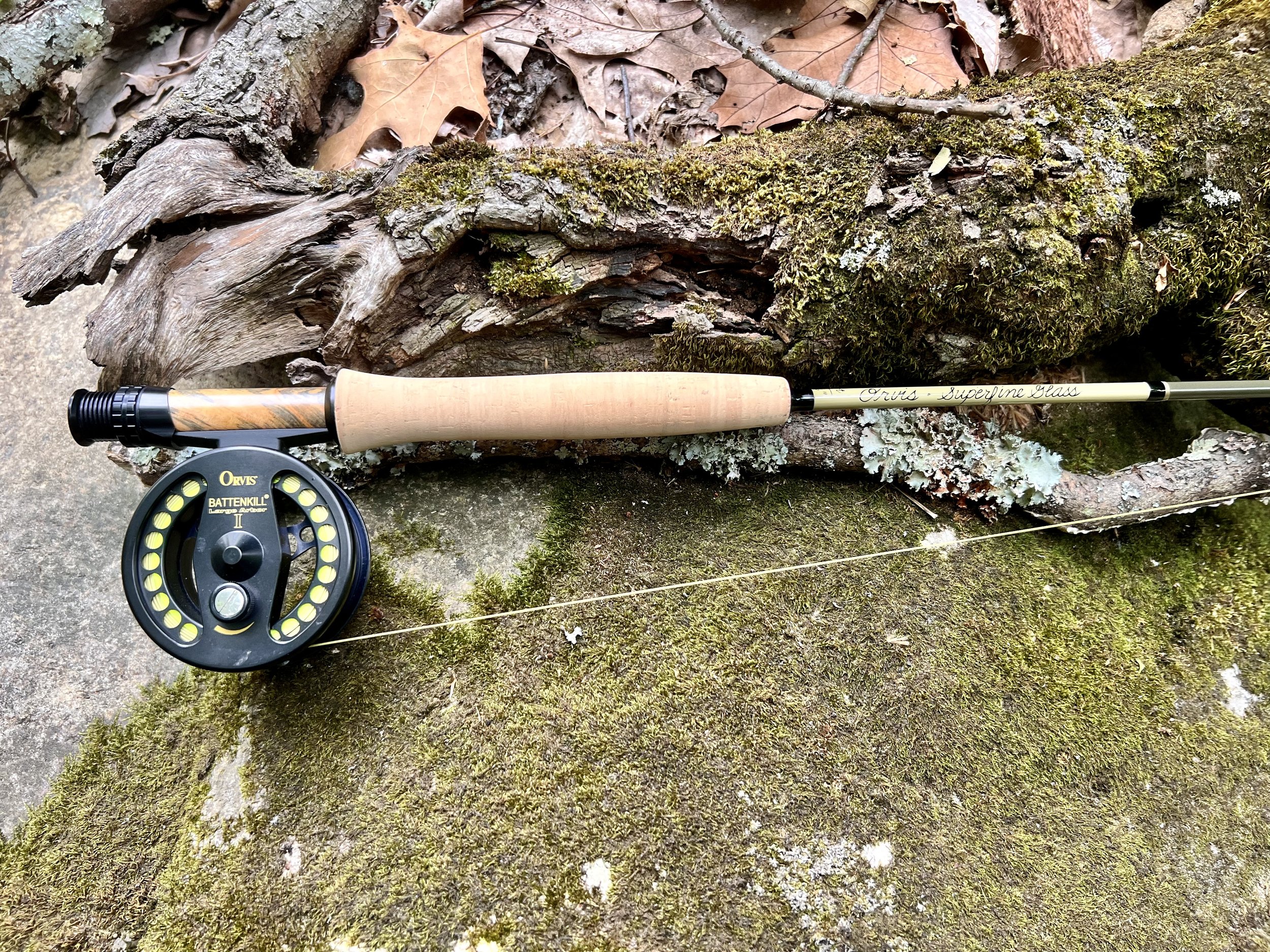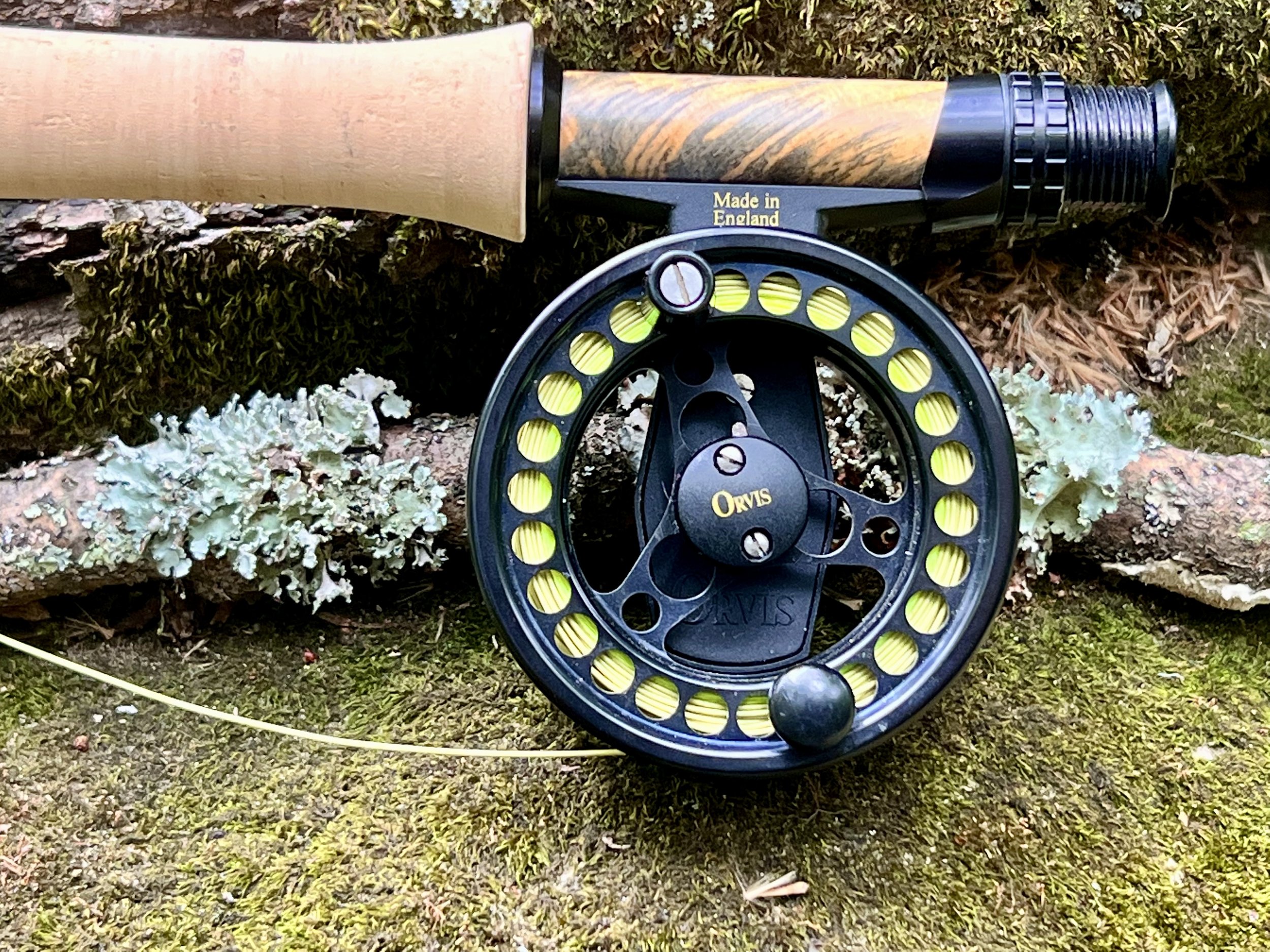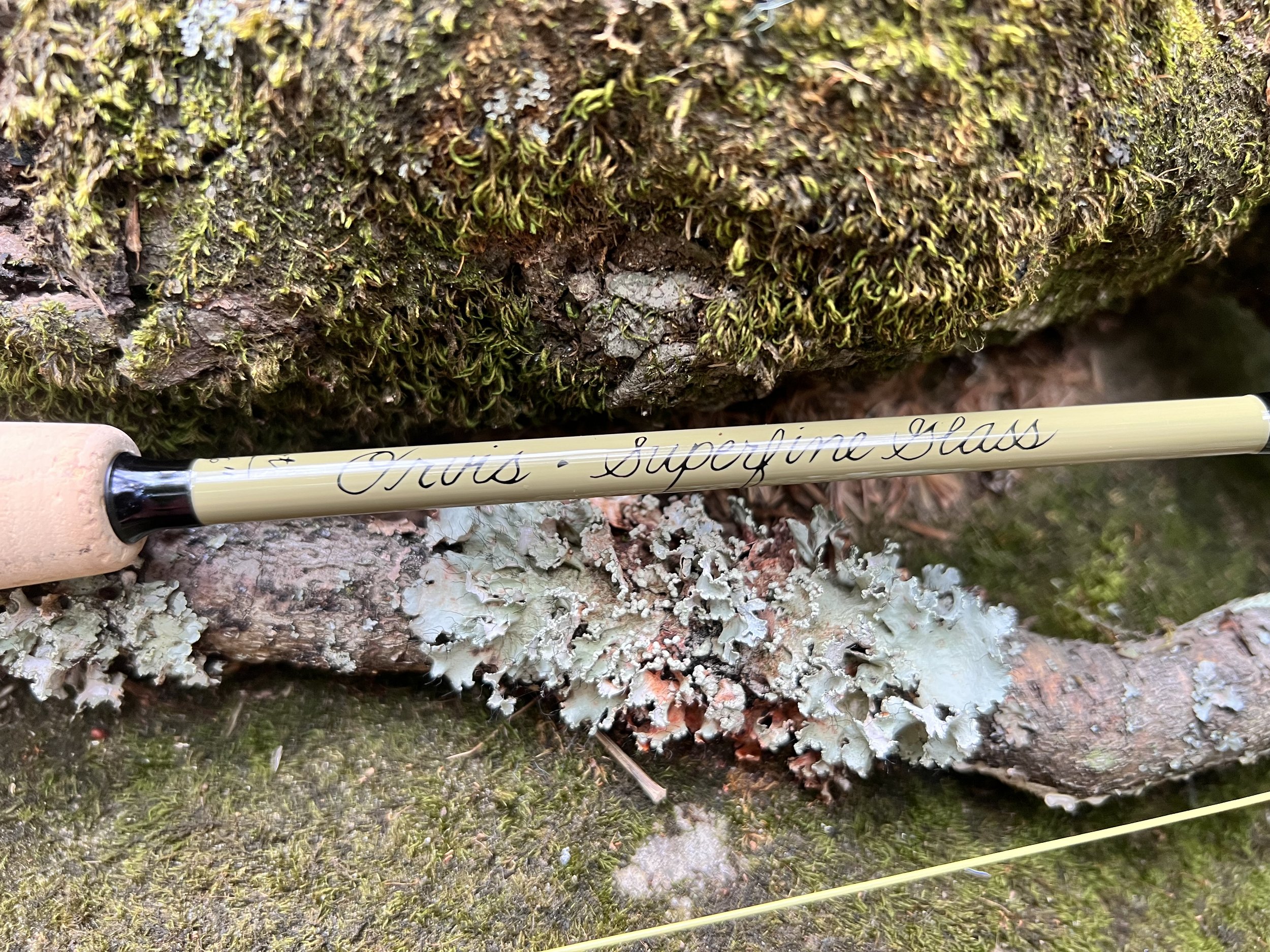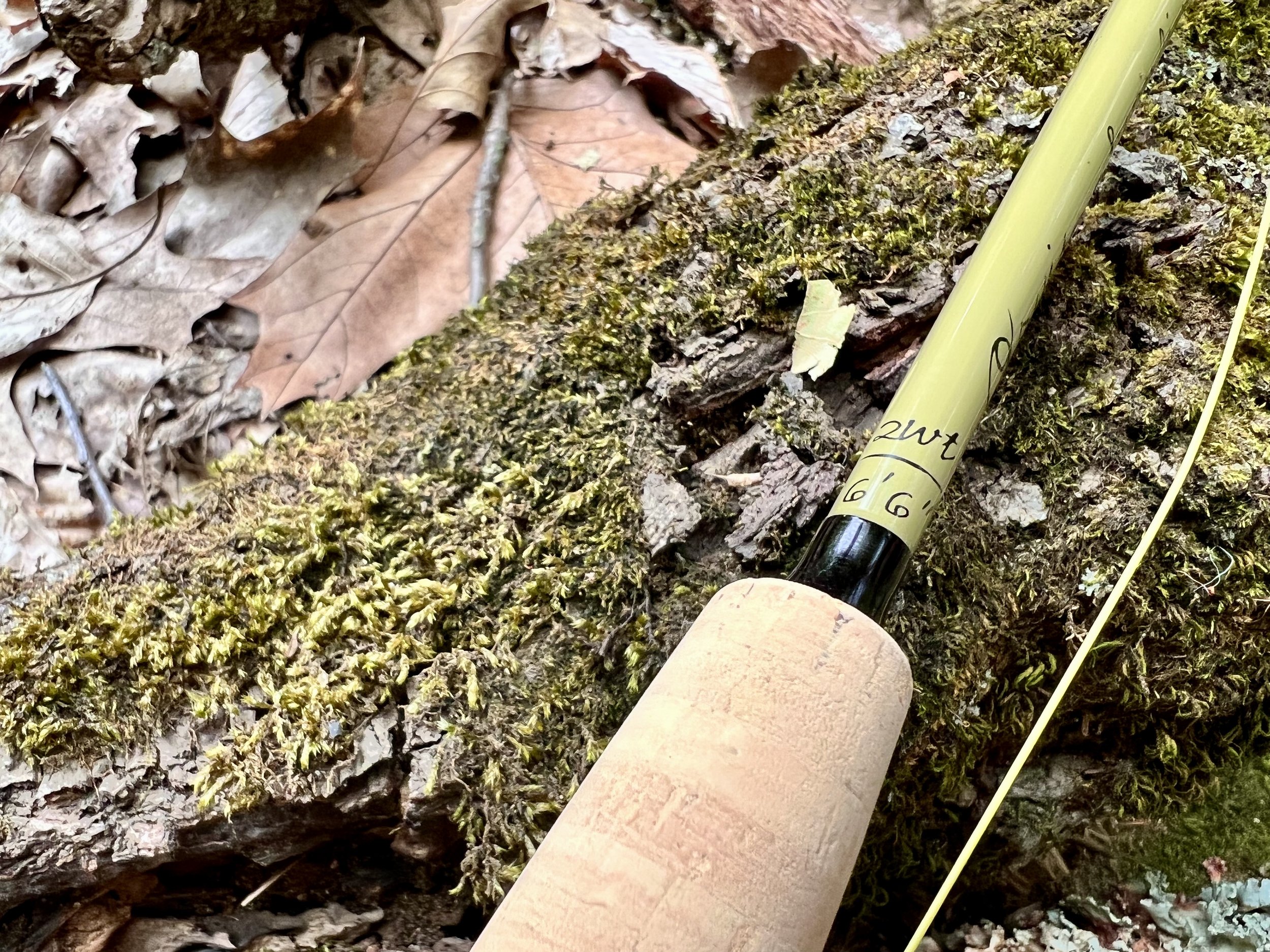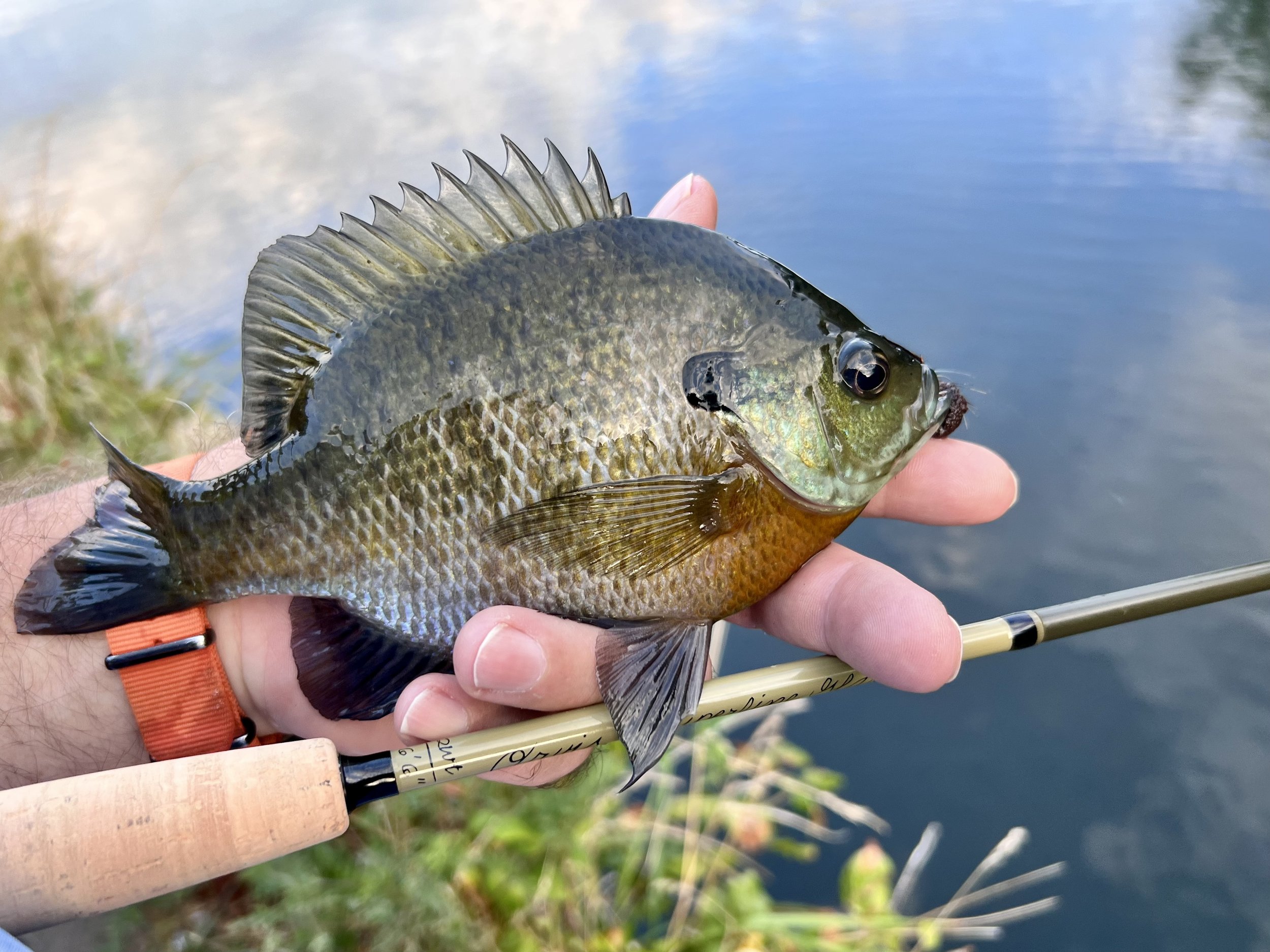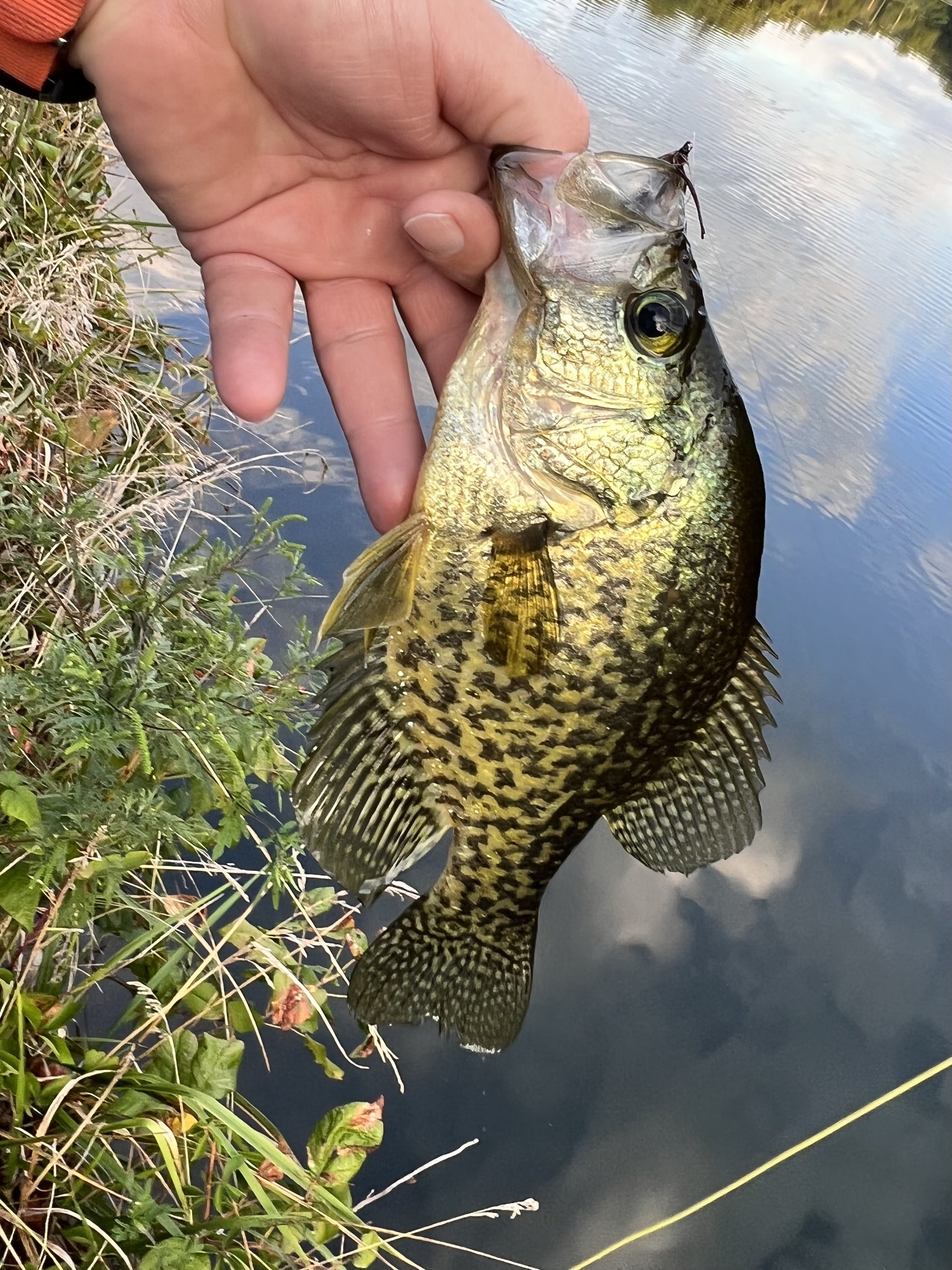Orvis Superfine Fly Rods have been a long-time favorite of mine. In fact, my daily driver is a vintage 2-piece 7’-11” four weight. The original carbon Superfines cast with a slower, full flex action which is precisely the type of fly rod I love when it comes to fly fishing for panfish. I prefer the versatility of a four-weight which allows me to throw a wide range of panfish patterns and gives me a little more rod to deal with the occasional largemouth bass or big chain pickerel. That being said, I also enjoy fishing lighter rods for the pure thrill they provide when fishing for smaller fish like sunfish.
Recently Orvis re-introduced their fiberglass Superfine fly rod line-up. This is not Orvis's first attempt to produce a line of fiberglass fly rods. I owned a few of their first-generation glass Superfine rods, and while they cast and fished very well, I found their appearance downright ugly. The blanks were unsanded and unattractive matte light green color.
Black anodized aluminum hardware and a burl wood reel seat add an attractive accent to the new Superfine fly rods.
The new fiberglass Superfine rods are gorgeous! The matte dark olive blanks are sanded with the label area retaining the light green of the original fiberglass rods which works much better as a label than a blank color. Their appearance is further enhanced by a burl wood reel seat and black anodized aluminum hardware. The cork grip is of the highest quality, and the general fit and finish are flawless. Each rod is labeled with classy-looking cursive lettering as a throwback to the original Superfine series.
The label of the new Superfine rods retains the color of the original fiberglass version and features cursive lettering.
Not your grandpa’s fiberglass fly rod
But these fly rods are just not another pretty face. Constructed using S-2 fiberglass, they are some of the smoothest casting rods I have ever handled. Behind that smoothness is a strength that adds a little punch to your cast and gives you the power to lay into a good fish. Many fiberglass fly rods cast like a wet noodle, not these new Superfines. Orvis rod designers snuck some design components of their popular Helios series into these new rods. As a result, they are sleek and modern yet retro looking at the same time. Fiberglass junkies will love these new rods!
I fell in love with the 6’-6’ two-weight the moment I picked it up!
The current Superfine line-up offers fly rods in two through eight weights. When I picked up the diminutive 6'-6" 2wt for the first time, I fell in love with it immediately. After stringing one up for a few test casts, I could not get my wallet out fast enough! I had been anxiously anticipating getting my hands on the 7'-6" four-weight as that is my preferred wand for panfish, but the sweet little two-weight was too hard to walk away from, so the four-weight will have to wait.
So it is a beautiful rod, but how does it fish?
In short, it is incredible. While panfish are my intended target with this rod, it would also be the perfect small stream trout rod for the blue line fanatic. The new Superfine is not your father's (or grandfather's for the younger audience) fiberglass fly rod. The new S-2 is faster with a quicker recovery but keep in mind this is still a glass rod, and it will have a slower action than any graphite rod you own.
Average sized bluegills feel like lunker on the 6’-6” two-weight.
I currently have the rod strung with an Orvis Superfine 2wt line, but I have experimented with some heavier lines like the Rio Gold. I even put on a Wulf Triangle Taper three-weight line on this rod, which handled it flawlessly. Although I prefer the delicate presentation of the Superfine line, the rod can handle more aggressive tapers, which can be helpful when fishing larger flies.
This small crappie put a deep bend in the two-weight superfine. Light rods such of these add a bit of sport even when catching smaller fish.
I have been putting the rod through its paces over the last few weeks, and I am still in love with it. As expected, it is a joy to cast with small flies, but larger more air resistant flies will bog it down a bit. With a traditional dry fly I can lay out forty-foot casts without difficulty. When slinging a waterlogged mop fly or an air resistant popper or gurgler I would reach for a three or four weight. fly rod. I love the feel of the fight of a hefty bluegill on a light rod like this but I will tend to fish traditional dry flies and my favorite wet flies on this one and break out a heavier rod for the big stuff. In a pinch the rod will through a bigger bug but it really shines when fishing smaller flies.
A water logged size 6 mop fly (The Creature) took a little bit of effort to cast on the 2wt, but the little rod was able to get the job done.
Are there any shortcomings?
The truth is there are, but nothing that takes away from the fishability of the rod. First is the stripping guide. I found it a little undersized on the two-weight, and I would have preferred an agate or ceramic insert on the guide, granted it is probably overkill for a two-weight, but I like them. The only other thing I find lacking is a hook keeper. Orvis and some other well know manufacturers stopped putting them on their fly rods a few years back. I know I am not the only angler out there that prefers a hook keeper on their fly rod. My rods are often stored rigged and ready to go in my truck, and I miss those simple little hook keepers. As much as I prefer hook keepers, I should mention that I found the hook keeper on the first-generation glass Superfines a bit of a nuisance. They were a bit angular and oversized, and the fly line would catch them occasionally. But, outside of those two nit-picking details, I find nothing wrong with these new rods.
The U.S.-built Orvis Fiberglass Superfine fly rod retails for $498.00 for all sizes. In addition, these fly rods will carry Orvis's famous 25-year warranty, which allows for repair or replacement of your rod due to breakage, whether it is your fault or theirs. The rod ships with a. rod sock and a cloth-covered tube. The new Superfine rods should start showing up at your Orvis retailer or local fly shop that carries Orvis products. So stop by and take one for a spin. You will not be disappointed.
